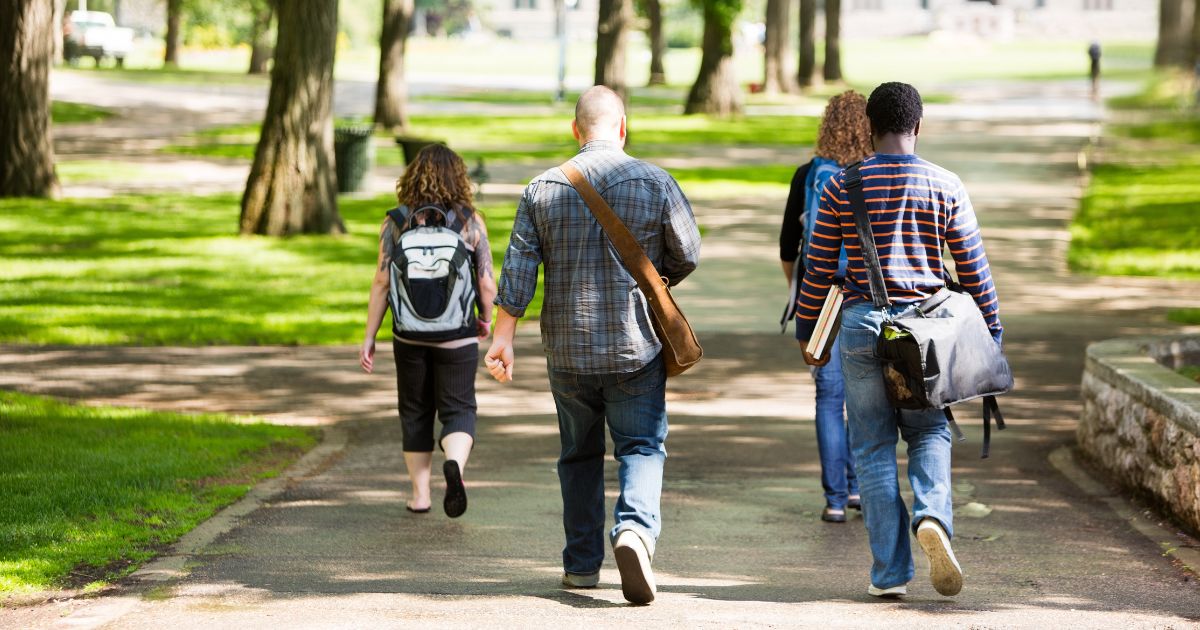
It doesn’t take place on a bus, so why write about campus walkability? In a way, walkability is an important precondition for successful transit programs. Campus transportation can’t be successful if students can’t walk to it.
Turns out, walkability is a surprisingly complex topic that touches on many campus factors and varies according to different campus locales. For example, ask two students the fastest way to get to a classroom on a city campus and you’ll get two different answers. That’s because an urban grid layout provides a variety of options for traversing the campus environment. Add in other city factors – construction, pedestrian congestion, the perception of unsafe areas – and routes can be highly variable.
Traditional, self-contained campus environments (the kind we associate with Ivy League and private colleges) face different challenges, like longer walking stretches within the campus and limited access to off-campus venues like shops and restaurants. Meanwhile, commuter colleges located in primarily suburban areas require students to drive to classes, but often consign parking to remote lots. Regardless of the type of institution, they all face the same conundrum: how to encourage campus transit use in a culture where the default is private vehicle ownership.
University planning departments can use walkability to encourage use of campus transit by students. They can start with the campus hardscape – ensuring that sidewalks are fully accessible and well-lit. Also important are weatherproofing (by adding covered structures against rain or sun) and proper drainage. When adding or enhancing walkways, planners should look for desire paths – shortcuts and footpaths organically created by human activity – as logical pathways to connect various parts of campus like residences and dining halls, classrooms, and libraries. Signage is another critical component. We love this signage project at the University of Kentucky that uses QR codes to inform students on how to reach different destinations on campus (and hopefully some of those destinations are bus stops!)
The many benefits of walkable campuses
Improving campus walkability helps colleges meet student transportation needs using buses or micro mobility options like scooters or bicycles instead of cars. Another benefit that accrues from that is affordability. Maintaining a car on campus is expensive. Fuel, parking fees, car payments, maintenance, and insurance all add thousands of dollars to the yearly costs of a college education, making it a key factor when prospective students look at a school.
A walkable campus can also contribute to an institution’s sustainability goals by helping to reduce its carbon footprint. Some of these initiatives can be cheaper than replacing fleets with electric buses. For example, minimizing parking or reserving parking spaces for car shares can help institutions acquire LEED certification. The Sustainability Tracking, Assessment & Rating System (STARS) from the Association for the Advancement of Sustainability in Higher Education (AASHE), a well-known framework for measuring the sustainability of colleges and universities, monitors the size and energy usage of campus fleets and commuter transport. Although STARS does not track the walkability of campuses per se, it does rank quality of student life, which affords opportunities to rank for campus micro mobility projects; for example, a bike reuse program at Colorado College. Another popular ranking site, Princeton Review, includes mass transit, bicycle sharing, and greenhouse gas emissions programs as ranking factors.
A safer, more appealing campus
Walkable campuses also tend to be safer. More students, faculty, and staff walking on the grounds creates a more secure environment on campus. Walkable campuses also reduce traffic congestion. When students, faculty, and staff eschew driving, there are fewer cars on the road, more opportunities to use bicycles or scooters, which can lead to fewer accidents and improved air quality.
Most importantly, walkable campuses create an attractive and engaging environment, fostering student and faculty interaction, and creating a sense of community. Giving students the ability to mingle with a diverse college community creates a more welcoming and supportive environment, and in turn a healthier, more sustainable, and more rewarding college experience.